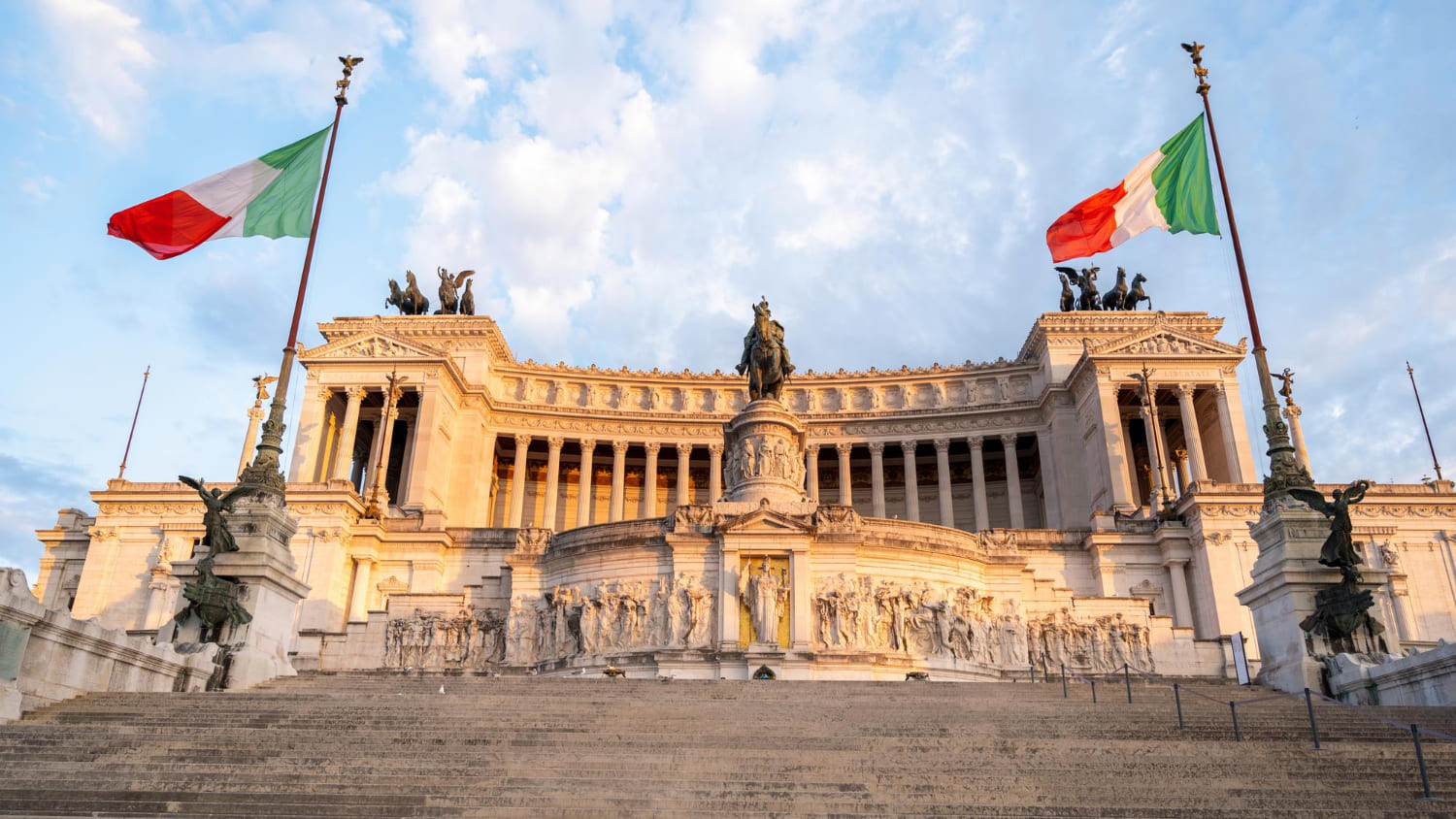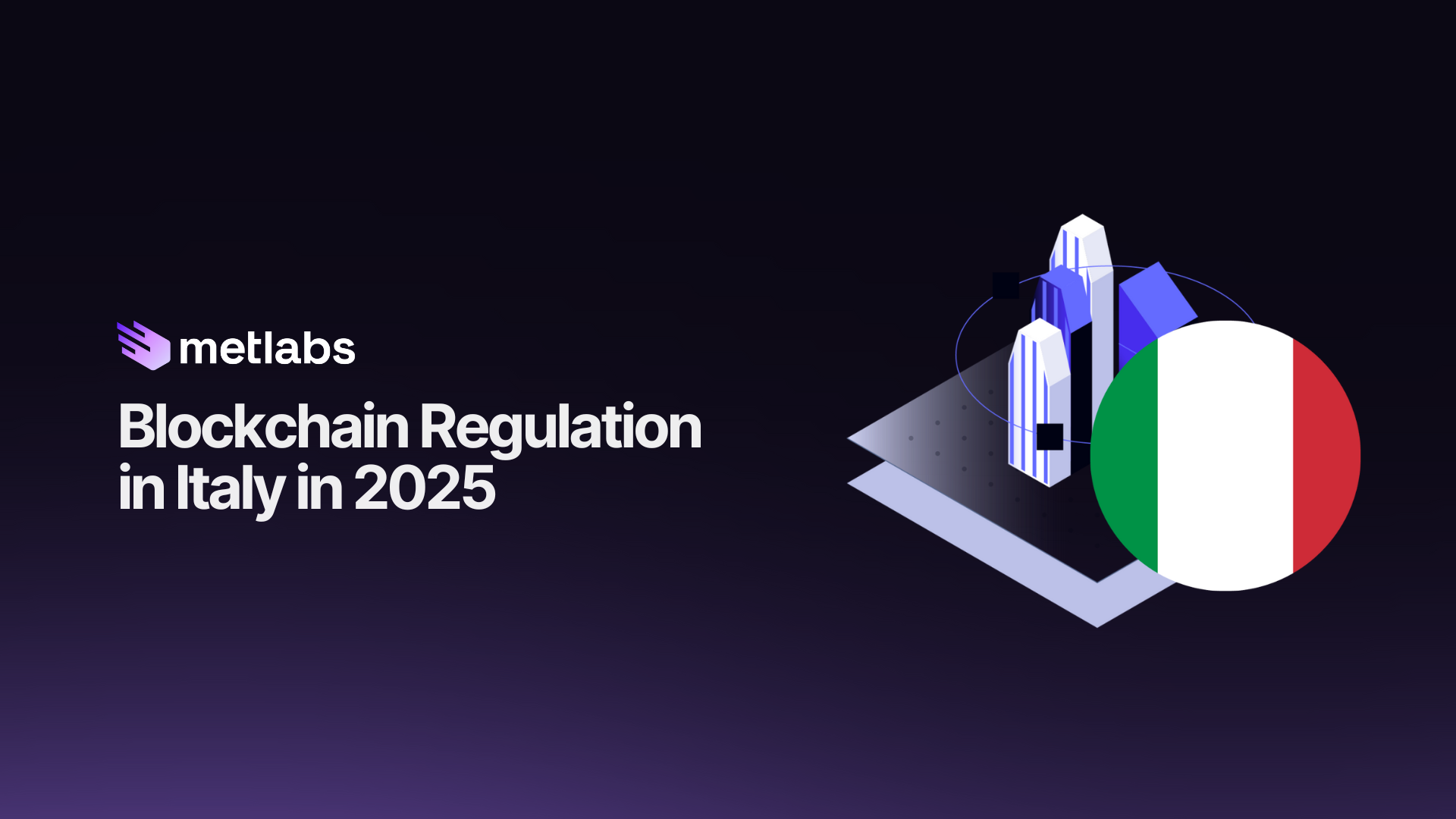The adoption of blockchain technology and asset tokenization is advancing at a rapid pace, but the real engine driving its global development is the existence of a clear, consistent and innovation-friendly legal framework.
Some countries have already established themselves as regulatory benchmarks, establishing specific rules for cryptoassets, DLT infrastructures and token issuance with legal backing. In this article we show you relevant information about blockchain regulation in Italy, which you can use as a guide if you are looking to operate internationally or evaluate different strategic locations.

Current legislation on blockchain and virtual assets in Italy.
MiCA Regulation (Markets in Crypto-Assets Regulation)
Establishes the EU’s first comprehensive legal framework for regulating cryptoasset issuers and service providers (CASPs). Covers stablecoins, utility tokens, electronic money tokens (EMTs), asset referenced tokens (ARTs), and custody or exchange platforms. Requires prior authorization, governance requirements, solvency, transparency, and user protection.
MiFID II (Markets in Financial Instruments Directive II)
European Directive that regulates the markets of traditional financial instruments and also applies to cryptoassets considered as financial instruments (e.g. security tokens). It establishes rules on transparency, investor protection, advisory services, order execution and prudential requirements for investment firms.
Legislative Decree of Transposition
Italy has adopted a legislative decree to adapt the MiCA Regulation to national legislation, detailing specific obligations for cryptoasset service providers. This decree defines registration, authorization and supervision procedures, and introduces a penalty regime for non-compliance. Supervision is divided between CONSOB (transparency, investor protection), the Bank of Italy (financial stability and stablecoin reserves) and the OAM (registration and control of CASP).
Cryptoassets Sandbox and DLT Pilot Regime in Italy
Italy participates in regulatory sandbox initiatives at both national and European level. The regulatory sandbox allows fintech and blockchain companies to test innovations in a controlled environment, under the supervision of financial authorities. This fosters collaboration between companies and regulators, facilitates the detection of regulatory barriers and promotes responsible innovation. Italy is among the participating countries and supports blockchain technology use cases in a secure environment, providing legal and regulatory advice to selected projects.
Tokenization makes it possible to digitally represent real-world assets through blockchain, but for it to have legal value, a regulatory framework recognizing this operation is essential. Italy adopts its own approach, establishing specific rules for the issuance, custody or trading of tokens. In this block we explain how asset tokenization is regulated from a legal point of view, taking an advanced jurisdiction such as Italy as an example.
Regulation of asset tokenization in Italy
In 2025, Italy is positioned as one of the most advanced countries in Europe in regulation for asset tokenization. The implementation of Regulation (EU) 2023/1114 (MiCA) and Regulation (EU) 2022/858 is complemented by Decree-Law 25/2023, which adapts national legislation to these EU frameworks. This decree allows the tokenization of financial instruments such as stocks, bonds and fund shares, even of unlisted companies, legitimizing the use of DLT registries.
DLT registries enjoy full legal recognition, allowing the exercise of rights over assets according to their digital registration and guaranteeing the irrevocability of rights acquired in good faith. They can be managed by banks, investment firms or issuers, under strict supervision of CONSOB, which maintains an official register of authorized operators. In addition, Italy actively participates in the DLT market infrastructure pilot scheme, allowing secondary markets to operate with tokenized securities.
MiCA regulates the issuance of cryptoassets and requires authorization and transparency from issuers and CASPs, with oversight from the Bank of Italy, CONSOB and OAM. A regulatory sandbox has also been deployed to facilitate testing in controlled environments.
This comprehensive framework provides legal certainty, fosters innovation and makes Italy a reference hub for asset tokenization in the EU, even going beyond the European scope by allowing the tokenization of assets not traded on regulated markets.
Regulatory bodies and authorities for digital assets in Italy
Bank of Italy
The Bank of Italy, as the national monetary authority, plays a crucial role in the prudential supervision of the financial system and in the stability of the payment system. In the context of digital assets, it collaborates closely with European institutions in the implementation of the MiCA Regulation, especially regarding e-money token (EMT) issuers and the custody of reserves for stablecoins. It also assesses systemic risks arising from the adoption of DLT and DeFi technologies, and establishes guidelines for proper liquidity management, cybersecurity and governance by cryptoasset service providers.
National Commission of Companies and Stock Exchange (CONSOB)
CONSOB is the regulatory body for financial markets in Italy. It has direct competence over the authorization, supervision and sanctioning of public offerings of cryptoassets (ICO, IEO), as well as over service providers such as exchanges and investment platforms, under the MiCA Regulation. It supervises the veracity and completeness of whitepapers, combats insider trading and monitors market integrity in tokenized environments. It also maintains an updated register of CASPs authorized to operate in Italy and collaborates with other European authorities through ESMA.
Ministry of Economy and Finance (MEF)
The MEF is responsible for the design and implementation of the economic, budgetary and financial policy of the Italian State. In the field of digital assets, it leads the regulatory transposition of European regulations and the creation of national decrees such as Decree-Law 25/2023. The MEF also drives strategic initiatives such as the regulatory sandbox and defines the fiscal framework that applies to cryptoassets, in coordination with the Tax Agency. Its role is key in promoting a favorable environment for technological innovation, without compromising consumer protection or the integrity of the financial system.
Organization of Agents and Mediators (OAM)
Although not often mentioned, the OAM has been designated as the competent authority to maintain the registry of virtual currency service providers, in line with the requirements of AMLD5 and Legislative Decree 90/2017. CASPs must be registered in this registry to operate legally in Italy, and must comply with obligations for the prevention of money laundering and terrorist financing. The OAM carries out periodic checks and has sanctioning powers in case of non-compliances.
Launching a business based on digital assets requires more than just technology: it is also necessary to comply with legal requirements such as licensing, registration and regulatory obligations. These conditions ensure that the business model is viable and sustainable over time, and that it complies with transparency and fraud prevention standards. In this section we explore what licenses are typically required and what compliance criteria blockchain companies operating in Italy must follow.

What licenses and requirements are needed to trade cryptoassets in Italy?
CASP License (MiCA)
CASP licensing is mandatory under the MiCA Regulation for exchanges, custodians and issuers of ART and EMT tokens operating in Italy or the EU. CONSOB grants or denies prior administrative authorization for CASPs, after consultation and collaboration with the Bank of Italy, especially when dealing with issuers of stablecoins (electronic money tokens, EMT, and asset referenced tokens, ART), where the Bank of Italy assumes a specific supervisory role.
Investment Firm License (ESI)
If an Italian platform offers crypto derivatives (such as futures, options, CFDs or other financial products whose underlying is a cryptocurrency), those products are considered financial instruments under European and Italian law. Therefore, the trader needs an investment firm license under MiFID II to be able to offer them legally.
AML/KYC Compliance
All crypto companies in Italy must comply with the Money Laundering Prevention Law, which in Italy is based on the transposition of Directive (EU) 2018/843 (AMLD5). This includes the implementation of KYC processes, transaction monitoring, identification of beneficial owners and suspicious activity reporting. The OAM (Organismo Agenti e Mediatori) supervises compliance with these obligations as an essential condition for obtaining and maintaining licenses.
Other regulatory requirements
Crypto companies in Italy must comply with the DORA Regulation, in addition to minimum capital requirements and annual technical audits. DORA requires ICT risk management systems, cybersecurity, business continuity and periodic digital resilience testing. It also mandates oversight of external technology providers and training of staff in digital security. Compliance with DORA is mandatory to maintain the MiCA license.
Are you exploring developing your blockchain project in Italy?
At Metlabs we help companies like yours and offer comprehensive accompaniment in the development of blockchain projects and tokenization of assets such as real estate, carbon credits, commodities, intellectual property, financial instruments, franchises and more, fully aligned with blockchain regulation in Italy and international regulatory standards.
Contact us and find out how we can help you meeting all your business model needs, from technical validation and structuring to design, development and implementation of custom blockchain solutions, ready to scale from day one.



